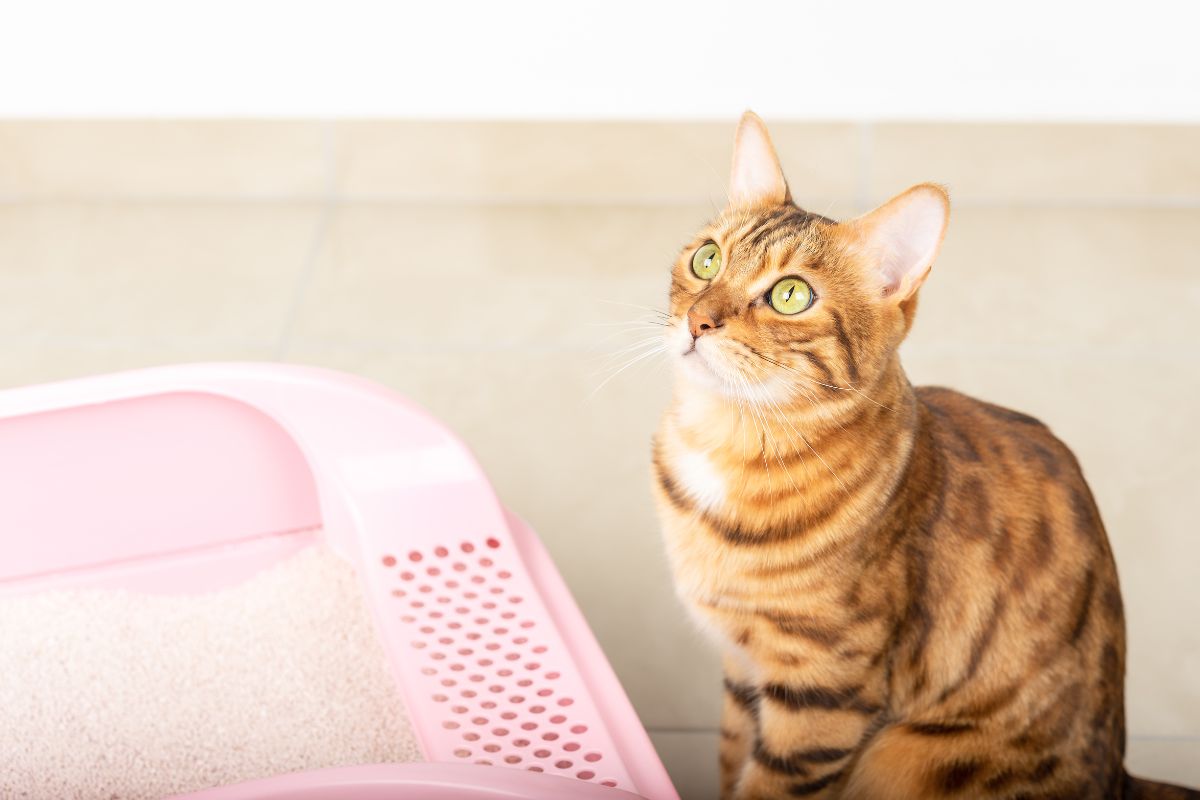
Choosing cat litter seems simple—until it isn’t.
Walk into any pet store and you’ll find an entire aisle of options: clumping, non-clumping, clay, corn, pine, paper, crystal, scented, unscented. It’s easy to feel overwhelmed.
At Brigite’s Bengals, litter is more than just a cleanup decision—it’s a core part of feline care. Cleanliness, comfort, odor control, and environmental safety all depend on choosing the right litter. Over the years, we’ve tested countless options and guided many cat parents through the same decision. Below is everything we’ve learned.
🧪 What Is Clumping Cat Litter?
Clumping litter, typically made from bentonite clay or natural materials like corn or walnut shells, forms solid clumps when exposed to moisture. This makes it easy to scoop out both urine and feces daily, helping keep the litter box fresh.
✅ Pros of Clumping Litter:
- Easier daily scooping
- Excellent odor control
- Less frequent full-box changes
- Cats often prefer the soft, sand-like texture
⚠️ Considerations:
- Can be dusty (choose low-dust formulas)
- May track outside the box
- Heavier to lift and dispose
- Some formulas contain added fragrance or chemicals
🌿 What Is Non-Clumping Cat Litter?
Non-clumping litter absorbs moisture but doesn’t bind into scoopable clumps. These litters are often made of recycled paper, wood pellets, crystals, or non-clumping clay.
✅ Pros of Non-Clumping Litter:
- Often more affordable
- Fast moisture absorption
- Available in low- or no-dust options
- Many biodegradable and eco-friendly choices
⚠️ Considerations:
- Requires full-box changes more often
- Harder to spot and remove soiled areas
- Odors may build up faster
- Some cats dislike pellet textures
🐾 What We’ve Observed in the Cattery
In a multi-cat environment like a breeding cattery, odor control, sanitation, and cat preference matter a great deal. Clumping litter consistently provides the easiest maintenance and best results—especially in indoor spaces.
That said, natural non-clumping options like recycled paper or pine pellets can be ideal for:
- Kittens
- Post-surgery recovery
- Cats with respiratory sensitivities
Texture, scent, and dust all play a role in how cats interact with their litter. Sudden changes or strong smells can lead to litter box avoidance.
🧼 When to Choose Clumping Litter:
- You prefer easy, daily scooping
- Your cat is healthy and litter-trained
- Odor control is a high priority
- You have limited space (e.g., an apartment)
Pro Tip: Look for natural or low-dust clumping litters made from corn, walnut, or wood for a gentler experience.
🌱 When to Choose Non-Clumping Litter:
- You’re prioritizing budget or sustainability
- Your cat is recovering from surgery or is very young
- You’re using a fully compostable litter
- You’re okay with frequent full-box changes
Pro Tip: Soft paper or pine pellets are safe and gentle for kittens and special-needs cats.
📊 Quick Comparison Table
| Feature | Clumping Litter | Non-Clumping Litter |
|---|---|---|
| Scooping Ease | Daily, easy | Requires full-box changes |
| Odor Control | Excellent | Varies by material |
| Dust Level | Can be dusty | Many low-dust options |
| Cost | Higher upfront | Lower upfront |
| Cat Preference | Often preferred | Texture-sensitive cats may object |
🐾 Best Practices for Litter Box Success
- Scoop daily (clumping) or replace fully (non-clumping)
- Use unscented, low-dust formulas when possible
- Provide one litter box per cat, plus one extra
- Introduce new litter types gradually
- Use a litter mat to reduce tracking
🐾 Final Thoughts: Let Your Cat Lead
Ultimately, the best litter is the one your cat uses consistently and comfortably. If there are signs of hesitation—excessive digging, accidents outside the box, or refusal to enter—it may be time to re-evaluate.
At Brigite’s Bengals, litter box habits are one of the first things observed when assessing a kitten’s health and readiness for rehoming. A clean, accessible box with the right litter creates a positive experience for both cats and humans.
Whether clumping or non-clumping, synthetic or natural, the right litter can make all the difference in maintaining a happy, hygienic home.
